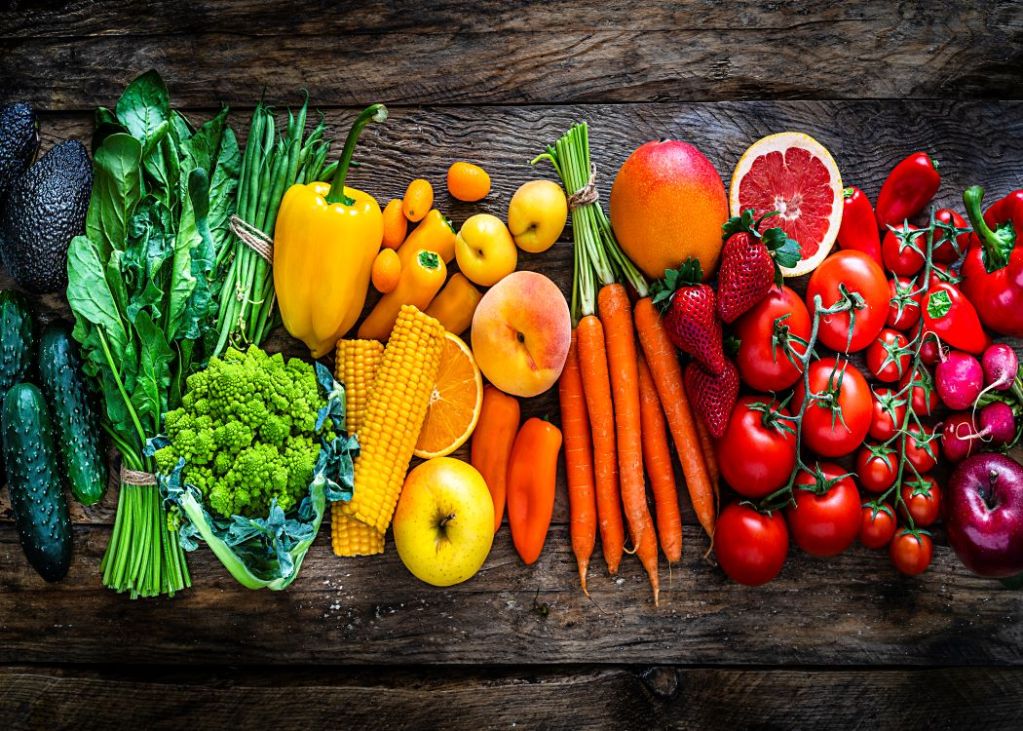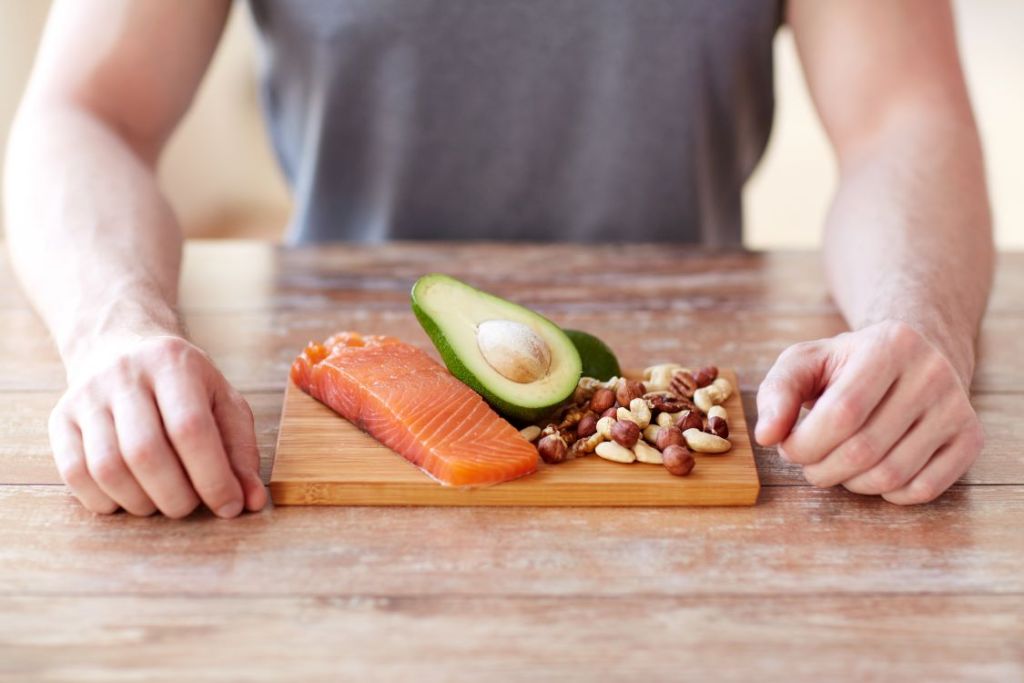
Getting in shape for the summer but not sure what to eat? Trying out light summer salad recipes to start it off – but you’re looking to add more nutritious ingredients? Staying healthy while you lose weight and build muscle shouldn’t be too difficult — and with the variety of natural, nutrient-rich foods available to choose from, we’re sure the task can be simplified. We’ve consulted top trainers and nutrition experts to bring you the basics of what to eat while you’re getting in shape — come build your menu from these recommendations:
WATER:
First of all, water. How much do you drink each day? The usual suggested amount seems to be 8 glasses of 8 ounces of water daily, while some experts recommend drinking half your own body weight in water per day. Drinking enough water is important, especially when it’s time to flush toxins, provide the body with essential minerals, and help regulate our body temperature. And when we’re working out regularly, it’s essential to replenish our water afterward as well.
Can’t quite get all that water down? Try adding a squeeze or two of fresh lemon, lime, or other citrus fruit, or perhaps a sprig of fresh mint. There are numerous herbal teas which are pleasantly flavored as well. If you’ve got a pretty glass pitcher, you could try making some lovely rainbow fruit-infused water like this recipe.
CARBS:
While the latest fad is to go without carbs as often as possible, true nutrition gurus treat the subject a bit differently. To these folks, carbs have a place in the diet, but the secret is in the timing. They believe carbs should be eaten earlier in the day rather than later — with low to medium glycemic index (GI) or whole grain products being the best choices overall. Bran cereals or whole grain toast for breakfast, and a dish with basmati rice, quinoa, or whole grain pasta for lunch would be ideal, while dinner can go high protein and nearly carb-free. Breakfasts like this quinoa bowl, lunches like this creamy avocado pasta, and dinners like this garlic butter salmon and asparagus are a great place to start!
PROTEIN:
Protein intake is essential, especially when exercising often, in order to allow the body to maintain, build, and repair muscle. Choose between lean meat or plant-based proteins, or a combination, and include a protein with meals as often as possible. Not sure you’re getting enough protein for your body’s needs? Up your daily intake with a between-meal snack like this low-calorie banana split protein smoothie. You can also shop for certain foods in bulk like nuts, trail mix, or other easy high-protein snacking foods to up your protein.

FRUITS AND VEGETABLES: “THE RAINBOW”
The best approach to fruits and vegetables should be this: eat 5 servings per day (a serving would be about the size of your fist), including 2 fruits and 3 vegetables. While it’s not generally discouraged to eat more vegetables than this, the high sugar content in most fruit keeps it limited to only 2 servings. Choose as widely as possible from ‘the rainbow’ of fresh fruits and veggies available as well. We’ve sorted some by color below:
RED:
Beets: great source of folate, manganese, fiber, iron, and vitamin C; good for improving energy, lowering blood pressure
Tart cherries/tart cherry juice: helps with pain reduction, improved sleep
Watermelon: lowers blood pressure, high in vitamins A, B6, C, magnesium and potassium
Pomegranate: great for enhanced memory and brain activity, contains nutrients to help remove free radicals and reduce inflammation
Tomatoes: has lycopene antioxidant (said to prevent prostate cancer in men), lots of vitamin C, K, potassium, and folate
ORANGE:
Sweet potatoes: contain beta-carotene, iron, vitamin C, and fiber
Orange peppers (as well as yellow, green, red, etc.): chock full of vitamin C, great for helping with losing weight
Carrots: plenty of fiber and beta-carotene here as well as a sweet flavor, great for juicing
YELLOW:
Bananas: potassium-rich, easy to take along for a to-go snack,. essential for thickening up a smoothie
Lemons: squeeze them into your daily water glass to improve the flavor, or over your favorite fish. You’ll add plenty of vitamin C and soluble fiber in addition to the refreshing taste
Pineapple: chop a fresh pineapple and grab the benefits of antioxidants, improved digestion, and boosting immunity
GREEN:
Broccoli and kale: great for heart health as a source of folate, as well as antioxidants, fiber, and calcium
Spinach: bursting with fiber, calcium, and beta-carotene
Green tea: full of antioxidants which improve brain function, fight heart disease and cancer, and assist with fat loss
BLUE:
Blueberries: contain polyphenols that protect the heart and lower blood pressure
Concord grapes/juice: full of antioxidants and immunity boosters, as well as nutrients to improve the memory, mood, and cognition
Blue corn: lowers blood pressure, protects against cardiovascular disease, cancer, and other disorders; make sure you opt for the organic blue corn tortilla chips for optimal nutrition
PURPLE:
Acai berries: high in antioxidants including anthocyanins, loaded with antioxidants, may help with cholesterol levels
Purple cabbage: also contains anthocyanins, as well as vitamins A and C, as well as glucosinolates that are considered cancer-fighters
Elderberries: high in vitamin C and fiber, known for immunity-boosting, especially among those who take them in syrup form as a preventative during cold and flu season
WHITE:
Although not really part of the rainbow, some white foods are essential to the diet as well!
Nuts: walnuts, almonds, Brazil nuts, etc., are high in heart-healthy fats and fiber. Helps control hunger between meals
Cauliflower: great source of B vitamins and fiber, antioxidants and phytonutrients, as well as choline to help with learning and memory
White beans: great source of protein and fiber, lowers cholesterol, tasty in soups like this one
Of course, these are but a glimpse into the vast array of colorful fruits and veggies you can choose from. When summertime farmer’s markets bring your local farmers together, see what you can find on the rainbow in your neck of the woods. And be sure to keep track of each color so you get a full rainbow in as often as you can. Happy healthy eating!
Editors' Recommendations
- When you should (and shouldn’t) put used coffee grounds in your garden
- How to propagate lucky bamboo in 5 easy steps so you don’t have to buy it
- A Super Bowl party isn’t complete without these delicious, easy-to-make eats
- Start off 2023 right: 8 low-cal dinner recipes that are actually tasty
- Start the morning off right with these 9 Mediterranean diet breakfasts




